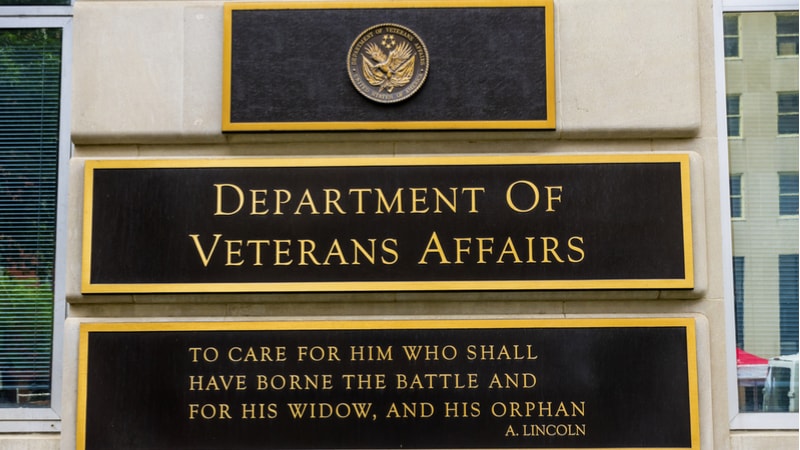
The Department of Veterans Affairs (VA) is on track to achieve its agency goal under the President’s Management Agenda (PMA) of improving veteran customer experience (CX), according to a June update released by the VA.
As part of the PMA, the VA was tasked with increasing veterans’ trust in the agency. More specifically, by September 30 of this year, the agency needs to increase veterans’ positive responses from 67 percent (based on a September 2017 survey) to 90 percent to the statement, “I trust VA to fulfill our country’s commitment to Veterans.”
To achieve that goal, the VA identified two strategies:
- Strategy 1: “Deploy capability for leadership and employees to see trending concerns and predictions on emerging topics in specific Veterans Health Administration (VHA) lines of business (i.e., outpatient services, such as mental health, primary care, optometry, physical therapy, cardiology, etc.) before they become problematic”; and
- Strategy 2: “Conduct and continually expand performance improvement training using Veterans experience insights to help inform for opportunities in service delivery and systems improvements across VHA outpatient services.”
As part of the report, the VA provided a number of updates, both large and small:
- A VA-wide trust survey showed a 2 percent increase in two of the primary indicators of customer experience – effectiveness and emotion – since the previous quarter. Another indicator – ease – increased by 1 percent. Effectiveness is now at 79 percent, emotion is at 73 percent, ease is at 70 percent, and over all trust is at 73 percent – up from 70 percent in October 2018.
- The Veterans Experience Office (VEO) has now applied the “industry best practice of human-centered design to map the Veteran’s inpatient journey and telehealth experience with VHA [Veterans Health Administration], which was used to identify the key moments that matter to Veterans in order to measure VA’s performance in those areas.”
- VEO has partnered with a number of VA offices to better survey veterans on their experiences with the VA. The VEO partnered with Board of Veterans’ Appeals to “deploy real-time survey capabilities to monitor Veteran feedback on their experiences in the appeals process.” It also partnered with the Veterans Benefits Administration to deploy similar survey capabilities to “monitor feedback about callers experience with the VBA Contact Centers.” The VEO also implemented “post White House/VA Hotline call surveys to solicit feedback from callers on their experience.”
- In another survey update, the VA reported sending 2,326,772 Veteran Signals (VSignals) Customer Experience surveys this quarter. However, the response rate was only 18.6 percent – or 432,426 responses. The VEO also launched multiple new CX surveys in February of this year, including a “survey and associated dashboard to solicit Veteran feedback about their experience with National Cemetery Administration (NCA) Contact Centers; and the first VA Telehealth providers survey.”
- New website resources and capabilities were also deployed. In December of last year, the VEO launched the Community Care Provider Locator on VA.gov, which provides veterans with a list and map of available local Community Care providers. Additionally, a new VA Welcome Kit was added to the website.
- In a less than positive update, the VEO reported that VHA Outpatient Trust decreased from 87.9 percent to 87.6 percent from January 2019 to March 2019.
- In February 2019, the VA held the Patient Experience Symposium, which brought together healthcare decision-makers and clinicians to discuss improving the patient experience at the VA. The update noted that more than 5,000 watched the symposium online, in addition to in-person attendance.
- The VA also held the Secretary Town Hall, which also focused on customer service improvements at the VA. VEO noted that 60,000 watched live and the content reached 3.75M via e-mail opens.
The VA has four “Key Milestones” that it is expected to meet through this improvement process. It has currently completed three milestones and is “on track” to meet its final milestone – complete automation of measurement and reporting across additional lines of business, such as benefits – by Sept. 30, 2019.
